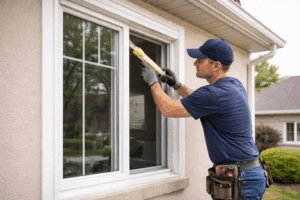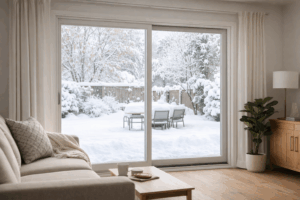Choosing energy-efficient windows is one of the smartest ways to improve your home’s comfort and lower utility bills. Among the many window styles available today, casement windows stand out for their strong performance in sealing out drafts and locking in indoor temperatures. But how do they compare to other popular styles?
Let’s break down how casement windows measure up when it comes to energy efficiency.
What Are Casement Windows?
Casement windows are hinged on the side and open outward like a door, usually with a crank handle. When closed, the sash presses tightly against the frame, creating a strong seal. This makes them ideal for energy savings, especially in climates with cold winters or hot summers.
Why Energy Efficiency Matters
Windows play a big role in a home’s energy performance. Poorly sealed or outdated windows can cause drafts and air leaks, higher heating and cooling bills, and uncomfortable temperature swings.
Energy-efficient windows help reduce these problems by blocking heat loss in winter and keeping cool air inside during summer.
Casement Windows vs. Double-Hung Windows
Double-hung windows slide vertically and are a classic choice for many homes. While they offer ventilation and easy cleaning, they tend to be less energy-efficient than casement windows. That’s because the sliding design doesn’t seal as tightly, weather stripping can wear down over time, and more moving parts mean more chances for air leakage.
In contrast, casement windows use compression seals that close firmly, limiting air leaks.
Casement Windows vs. Sliding Windows
Sliding windows open by moving one pane horizontally over another. These are common in modern homes and are easy to use. However, when it comes to energy performance, sliding windows often lose points due to looser sealing edges, less insulation at the frame corners, and more exposure to wind and outside temperatures.
Casement windows, especially those with Low-E glass and insulated frames, provide a tighter barrier and better thermal performance.
Casement Windows vs. Awning Windows
Awning windows are similar to casement styles but open from the bottom and swing outward. They’re also known for good sealing and energy efficiency. The main difference is in placement.
Casement windows are great for tall, narrow spaces. Awning windows work well above sinks or in basements. Both styles seal well and outperform sliding or double-hung windows in energy savings.
What to Look for in an Energy-Efficient Window
Regardless of the style, look for these key features when choosing windows for energy efficiency:
Low-E Glass: Reduces UV and infrared heat transfer
Argon Gas Fills: Adds insulation between panes
Double or Triple Panes: Blocks temperature exchange
Energy Star Certification: Meets strict energy standards
Casement windows often include these features, making them one of the most energy-conscious choices for homeowners.
Final Verdict: Casement Windows Lead the Way
If energy efficiency is your top priority, casement windows are a smart investment. Their tight seal, modern materials, and minimal air leakage outperform many other window styles. Plus, they’re easy to operate and look great in both traditional and modern homes.
Need Help Choosing the Right Windows?
At Midwest Windows, Siding & Doors, we help homeowners across Greater Chicago choose the most energy-efficient window styles for their homes. Whether you’re replacing old windows or upgrading to reduce energy costs, our expert team is here to help.
Contact us today for a free estimate and see how new casement windows can make your home more comfortable and efficient year-round.








